What is Down Syndrome?
A congenital disorder arising from a chromosome defect, causing intellectual impairment and physical abnormalities including short stature and a broad facial profile. It arises from a defect involving chromosome 21, usually an extra copy (trisomy-21).
What Causes Down Syndrome?
Down Syndrome is usually caused by an extra chromosome in a baby’s cells. In most cases, Down Syndrome is not inherited – it is simply a one-off genetic change in the sperm or egg cell.
There is a small chance of having a child with Down Syndrome with any pregnancy but the likelihood increases with the age of the mother. For example, a woman who is 20 has about a 1 in 1,500 chance of having a baby with Down Syndrome, while a woman who is 40 has a 1 in 100 chance. There is no evidence that anything done before or during pregnancy increases or decreases the chance of having a child with Down Syndrome.
Types of Down Syndrome
There are 3 types of Down syndrome:
- Trisomy 21- An estimated 95% of babies born will be diagnosed with Trisomy-21 type.
- Translocation – This type of Down syndrome occurs in 3-4% of babies born with the condition.
- Mosaicism - Approximately 1-2% of babies born have this type of Down syndrome.
Main areas of difficulty:
- Fine motor skills and play
- Gross motor skills
- Self-care
- Dressing
- Sensory processing
- School tasks e.g. handwriting, scissors skills
Developmental Milestones for Down Syndrome
Gross motor skills
| |
Down syndrome |
Typical range |
| Sits alone |
6-30 months |
5-9 months |
|
Crawls
|
8-22 months |
6-12 months |
| Stands |
1-3.25 years |
8-17 months |
| Walks alone |
1-4 years |
9-18 months |
Language
| |
Down syndrome |
Typical range |
| First word |
1-4 years |
1-3 years |
Two word
phrases |
2-7.5 years |
15-32 months |
Social/self help
| |
Down Syndrome |
Typical Range |
| Responsive smile |
1-5.5 months |
1-3 months |
| Finger feeds |
10-24 months |
7-14 months |
Drinks from cups
unassisted |
12-32 months |
9-17 months |
| Uses spoon |
13-39 months |
12-20 months |
| Bowel control |
2-7 years |
16-42 months |
Dresses self
unassisted |
3.5-8.5 years |
3.25-5 years |
How can I support my child?
Have realistic Expectations: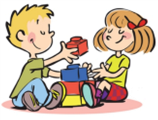
Know what stage your child is at, and what comes next within their development. You will know whether the activity is either too challenging,, physically or intellectually, or isn't challenge enough by the child’s responses. Remember persisting with skills that are beyond your child's current developmental readiness will result in frustration for you and your child.
Build on Success:
Use activities that you know your child has had success with. Build on that success by adding difficulty to an already accomplished task. Remember success and accomplishment are motivating to children, therefore your child will continue to want to engage in learning.
Break down Activities into small steps:
Grading (breaking down tasks) is a method of modifying how an activity is performed to make it more manageable or achievable. These strategies are important for all children but especially for those who are experiencing difficulties in the development of their skills.
Make it fun!
The more exciting an activity is the more likely your child will be motivated to engage and participate. Be aware of your voice and body language as these are powerful tools to initiate tasks with your child.
Be aware of the environment:
Learning new skills requires attention and focus. Be aware of distractions that may interfere with your child's attempts at an activity. Think bout physical space, hunger, time of day, interruptions, background noise and lighting. This can all impact upon skill acquisition.
Try out different activities!
If an activity is not successful the first time, try again using a different method. For example there are many ways to develop mark making, instead of using a pen and pencil why not try messy play and remember to d this in different environment so your child can generalise their skills.
Copying: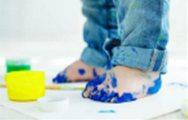
- Take your cue from the child and imitate simple actions and sounds such as blowing raspberries, making funny faces, mouthing ‘oooooh’ or sticking out tongues.
- Play games such as peek-a-boo, looking in a mirror and making faces and noises and encourage copying.
- Use the hand over hand method and say the action as it takes place. For instance, guide the child’s hand to build a tower of bricks and say, “pick up the brick” followed by, “put it on top”. Reduce support and guide elbow.
Exploring objects:
- Provide toys that are large and easy to handle to begin with, then gradually reduce the size.
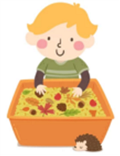
- Provide a wide variety of toys and other objects that have many different properties, for instance, textures, shapes, colour, and those that make a variety of sounds.
- Use kitchen utensils, fabrics and containers filled with different materials such as liquids, powders, sand, or coloured beads.
- Provide percussion instruments, drums and home-made rattles made from clear and opaque containers filled with a variety of materials such as rice, dried peas marbles and coins.
Object permanence:
- Play games such as peek-a-boo and hide and seek.
- Hide toys and objects partially, then fully, then reveal. Follow this by encouraging the child to hide objects and involve peers in finding them.
- Hide objects under clear pots first, then under opaque ones.
- Roll cars and marbles. through tunnels or down tubes ad play at crawling through tunnels, disappearing from view and reappearing at the other end. - If child has visual difficulty place the objects just out of view and encourage child to search for them
Cause and Effect:
- Provide a wide variety of experiences of different object and toys with various effects.
- Ensure the toys ad objects respond easily to a light touch.
- Use books with lift-up flaps or windows to peek through.
- Introduce toys that pop up, have push or slide buttons that light up and make interesting sounds.
- Create opportunities to compare the reactions and sound effects of dropping a ball and dropping a hard object..
- Make use of simple computer games with easy point and click activities.
Mark-Making: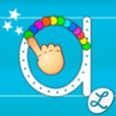
- Allow the child to explore different drawing and painting tools such as wax crayons, coloured chalks, pastels, felt pens, dry wipe pens, paint brushes and soft ‘B’ pencils.
- Provide lots of activities involving random scribbling beginning with A2 paper or bigger. Gradually develop control by reducing the size of the paper and increasing the level of accuracy, for example, from A3 – A4 – A5 - 10 cm and lastly 5cm squares.
- Make patterns in sand using a stick. Use water and a large paintbrush attached to a pole to make patterns on the ground.
Fine motor skills:
- Construction Toys: Lego, Duplo, Mecanno etc.
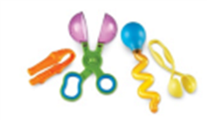
- Puzzles, Inset Puzzles.
- Board games , Marble Run, Octons,
- Posting, Threading, Sewing.
- Play dough, space putty, plasticine.
- Tweezer games: operation, feed the animals, avalanche fruit salad, bed bugs, crocodile teeth, using tweezers to sort objects / balls into colours, number, containers
- Arts and crafts.
- Baking, helping with food preparation.
- Gardening.
To view this page as a downloadable PDF please click
here.